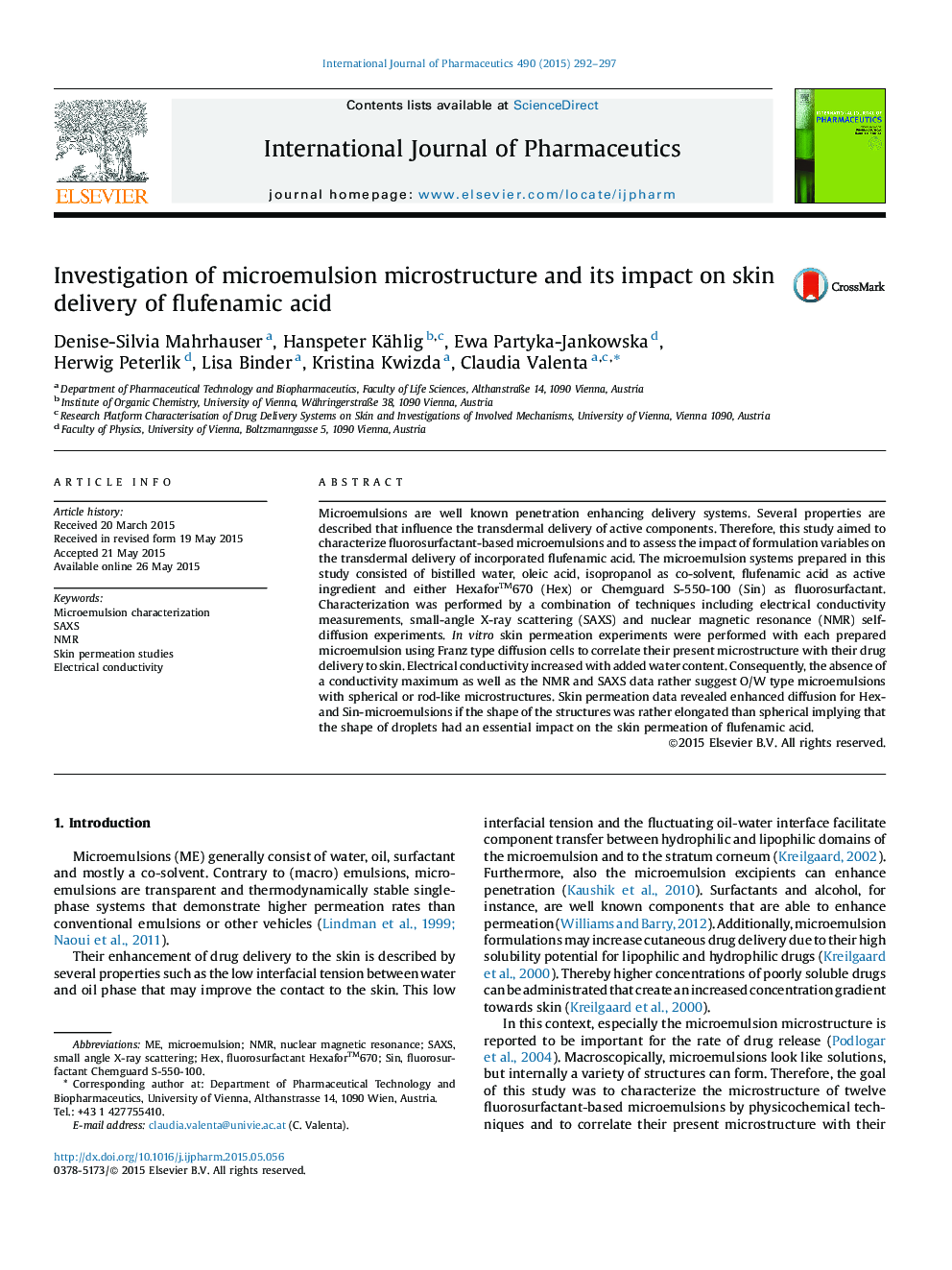| کد مقاله | کد نشریه | سال انتشار | مقاله انگلیسی | نسخه تمام متن |
|---|---|---|---|---|
| 2501315 | 1557334 | 2015 | 6 صفحه PDF | دانلود رایگان |
Microemulsions are well known penetration enhancing delivery systems. Several properties are described that influence the transdermal delivery of active components. Therefore, this study aimed to characterize fluorosurfactant-based microemulsions and to assess the impact of formulation variables on the transdermal delivery of incorporated flufenamic acid. The microemulsion systems prepared in this study consisted of bistilled water, oleic acid, isopropanol as co-solvent, flufenamic acid as active ingredient and either HexaforTM670 (Hex) or Chemguard S-550-100 (Sin) as fluorosurfactant. Characterization was performed by a combination of techniques including electrical conductivity measurements, small-angle X-ray scattering (SAXS) and nuclear magnetic resonance (NMR) self-diffusion experiments. In vitro skin permeation experiments were performed with each prepared microemulsion using Franz type diffusion cells to correlate their present microstructure with their drug delivery to skin. Electrical conductivity increased with added water content. Consequently, the absence of a conductivity maximum as well as the NMR and SAXS data rather suggest O/W type microemulsions with spherical or rod-like microstructures. Skin permeation data revealed enhanced diffusion for Hex- and Sin-microemulsions if the shape of the structures was rather elongated than spherical implying that the shape of droplets had an essential impact on the skin permeation of flufenamic acid.
Figure optionsDownload high-quality image (135 K)Download as PowerPoint slide
Journal: International Journal of Pharmaceutics - Volume 490, Issues 1–2, 25 July 2015, Pages 292–297
